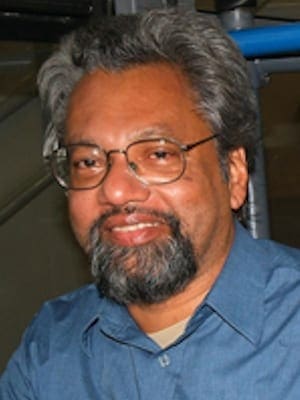Can the North American church become more Christian by learning from the history and politics of countries like India and Sri Lanka?
Even to suggest this must come as a bit of a shock to those small but highly vocal sections within that church who believe they have nothing to learn from other peoples, even non-American Christians.
In their political discourse, the U.S. is the bastion of liberty, democracy and prosperity – a beacon to the rest of the world. Somehow Christianity, the U.S Constitution and supply-side economics are fused together.
Economic libertarianism is identified as Christian freedom, and that precariously won freedom is now threatened. This bizarre discourse trades on fears engendered by the changing ethnic and religious landscape of the U.S.
This self-enclosed worldview, frequently invoking the rhetoric of “persecution” and the threat of big government, is making strong inroads into the minds of kids brought up not only in the “Bible Belt” but also Christian colleges and fundamentalist seminaries throughout the U.S.
It dominates the ugly genre of fundamentalist apocalyptic and the new “conspiracy fiction” (for example, David Kuhlberg’s sensationalist “War Against God”), pseudo news media, such as Fox and World Magazine, and parochial “academies,” such as the InterCollegiate Studies Institute and the Acton Institute.
There are many more, all massively funded by corporate America.
My first encounter with the tiny intellectual and social worlds of these “Tea Party Christians” (for want of a more accurate term) immediately reminded me of the Sinhala-Buddhist discourse in Sri Lanka and Hindutva (or Hindu nationalism) in India.
While the various schools of Buddhism comprise clusters of religious and ethical practices, beliefs and institutions (such as the sangha, or monastic order), what is labeled “Sinhala-Buddhism” is a political ideology.
Sinhala is the majority language of the island, and all Buddhists here speak it. If I were to define the core elements that form the mental map of Sinhala-Buddhists, they would be:
1. Sri Lanka is historically a Sinhala-Buddhist country.
All other ethnic and religious groups (Hindus, Muslims and Christians) live here at our sufferance. They must not aspire to equality but accept their proper place within the social and political hierarchy.
2. The high civilization of Sinhala-Buddhism is responsible for all that is good in our history.
All that is evil comes from Hindu invasions and Western colonialists (Portuguese, Dutch and finally the British).
3. Even though we are, numerically speaking, a majority (65 percent to 70 percent) on the island, we are threatened by powerful minorities who are aided, economically and politically, by “foreign powers.”
Today, Muslims, heavily funded by Saudi Arabia, are seeking to take over the state and impose their laws on us. Christian missionaries are in the pay of the C.I.A. and other U.S. powers that want to destroy our ancient civilization.
This is the mirror image of “Tea Party Christianity.” This is not mere ethnocentrism, to which we are all prone. It is nothing less than racism.
It thrives on one-sided national histories, ignorance of other people and their faiths, growing economic insecurity, and the fear of losing traditional privileges.
And just as we seek to persuade our Buddhist friends to distance themselves from this distorted caricature of Buddhism, so it may be the role of Muslims, Hindus, atheists and others in the U.S. to help “evangelical” Christians in the U.S. to publicly distance themselves from such distorted caricatures of historic Christianity.
Indeed, U.S. Muslim migrants can learn from the Roman Catholic experience.
For much of the 19th century, Catholics in America were the feared “religious other.” Not only did many not speak English, but also some of their religious women (nuns) wore distinctive clothing.
Their primary allegiance was to the Roman Catholic Church and not to the U.S Constitution. It took them more than a century to be accepted as equals by white Protestants.
At the same time, however, U.S. Catholics helped reshape parts of their own church.
The Jesuit, John Courtney Murray, was decisive in helping the Second Vatican Council endorse religious freedom – so much so that, ironically, the papacy has become the greatest global champion of religious freedom today.
Can Muslim migrants in the U.S., while not being intimidated by the phobias of the U.S. “right,” still help to reshape the politics of their home countries in the light of their more positive experiences of U.S. life?
I do not doubt that discrimination against orthodox Christians has been increasing in U.S. universities and the mass media. Those who oppose abortion or gay marriage are regularly pilloried and even excluded from public forums.
But Christians betray their faith by their strident cries of “persecution” and lobbing grenades at people, even among their own ranks, from a safe distance.
They can become more winsome and credible in their persuasive skills by being consistently “pro-life,” renouncing racism and nationalism, and being more willing to learn from others.
And the place to begin is by switching off their pseudo-Christian media networks, taking their kids out of home schooling, closing down their sectarian colleges and mono-denominational seminaries, living in ethnically and religiously mixed neighborhoods, and joining the mainstream of cultural and social life.
That is how the rest of us live.
Vinoth Ramachandra is secretary for dialogue and social engagement for the International Fellowship of Evangelical Students. He lives in Sri Lanka. A version of this column first appeared on his blog and is used with permission.
Secretary for dialogue and social engagement for the International Fellowship of Evangelical Students. He lives in Sri Lanka.

